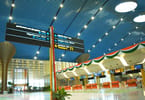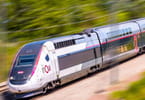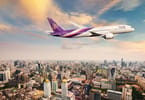Human factors knowledge is about the relationship and interaction between humans, machines, procedures, and the environment.
Its primary concern is to ensure understanding the predictable capabilities and limitations or performance of human beings to ensure safety, efficiency, and well-being of the individual within a system.
Limited application of human factors contributed to a number of aviation accidents in the 70s and 80s. For example, the crash of Eastern Airlines flight 401 in 1972 was attributed to lack of proper cockpit resource management. In 1977, two Boeing 747 aircraft collided on a runway in Tenerife. This accident was attributed to a breakdown in normal communication procedures and misinterpretation of messages. In both cases, competent, experienced, and healthy flight crew made performance errors.
Aviation human factors knowledge has developed mostly through investigation of past accidents and incidents. It is applied and integrated during system design (controls, symbols, displays, checklists, manuals, charts, crew resource management, procedures, duty time/rest periods, a non-punitive voluntary reporting system, and lay out of the flight deck, cabin, and Air Traffic Control stations) and certification as well as during personnel certification. Human factors training and knowledge is a licensing prerequisite. (ICAO Annex 1).
Drones are heavier than air, manipulated by humans and therefore have to be regulated like manned aviation. There are several types of drones with different operational characteristics. This article is mainly about commercial quadcoptor operations.
Quadcoptors are popular for both commercial and recreational purposes. They come in different sizes and can be purchased over the counter for as low as US$50.
Whereas some countries have legislation in place to regulate commercial operations, they mainly address security, authorizations/permits, weight, height restrictions, and safety of airports. The human factors component has been omitted, yet the same is necessary in a number of areas to ensure that the safety standards are equivalent to those in manned aviation. This article, though not exhaustive, addresses some of the important areas.
Training
This is not conducted by licensed instructors in approved training organizations like is the case for manned aviation.
No standard internationally approved quadcoptor training curriculum exists. Apart from manuals that come with the equipment and guidance from experienced fliers, there are a number of enthusiast websites with instructions and demonstration videos. No mention is made of human factors. Similarly, there are no standard licensing requirements for quadcoptor operations.
Some retailers in the United Kingdom run short training courses for aerial survey pilots with a human factors componenttraining courses for aerial survey pilots with a human factors component. However, this is not a regulatory requirement.
Control and Display Designs
Aircraft manufacturers invest a lot of resources on cockpit design research, to suit the measurements, movements, limitations of the human body and to ensure that pilots understand onboard systems, including the latest automation. During the 777 design process, Boeing worked with eight major airlines in the design phase, to ensure that the aircraft suited their customers’ operational requirements.
Quadcoptor manufacturers do not involve customers in the design process. The control units are not tested to ensure that they match the measurements or biomechanical design and motion of human hands and fingers.
Further, they do not have an array of display warning lights or aural alerts to attract attention in case of for instance, a system failure, wind shear, flying dangerously too low, etc. It is left to the pilot to diagnose problems and make split-second decisions.
Regulations should make it mandatory for human input in the design stage so that pilots are both knowledgeable and comfortable with the set up/configuration/displays of remote control units.
Environment
Manned aviation has the sterile cockpit rule to prevent idle talk and distractions while operating below 10,000 feet. Quadcoptor operations are by nature prone to distractions. For instance, a pilot out in a field on an aerial survey mission could be distracted by other humans, pets, a swarm of insects, or his/her cell phone. Such distraction, however brief, could end up in disaster.
There is need for regulators to include situational awareness and distraction recovery techniques in the training curriculum.
Duty Time
Quadcoptor operations are mostly Visual Line of Sight (VLOS). This implies, the operator may be on his feet for a considerable amount of time leading to fatigue and ultimately impairing one’s control abilities/decision making.
There are no regulations or guidance material to determine how long operations should last. Duration mostly depends on battery life or accomplishment of the assignment/mission. Long periods of duty might lead to a decline in concentration levels, leading to potentially unsafe situations.
Regulators should stipulate duty time, adequate rest periods and ensure that commercial operators adhere to, and roster their operations in a manner that allows pilots adequate rest and recovery periods.
Crew Resource Management/Procedures
Commercial aircraft engaged filming/survey/photography carry an extra crew member specifically for the purpose. Multitasking by a quadcoptor pilot, for instance, taking pictures or filming simultaneously increases the potential for mistakes.
Regulations should separate roles in commercial operations so that the pilot concentrates on flying and photography/videography duties are assigned to a second person.
A non-punitive reporting system
ICAO Annex 19 establishes a state safety system, key to which is data collection through mandatory and voluntary reporting systems. It is intended to identify hazards and unsafe conditions that have not yet caused an accident/incident.
These systems can only work if operational personnel have the confidence that no punitive action shall be meted out against them for unintentional mistakes/errors.
In quadcoptor operations, a pilot who inadvertently hovers over private/restricted access property and reports the same should not be punished if for instance, he did not know the boundaries of this property, or because fatigue impaired his decision making at the time.
Regulations should provide for safety management systems with structures, policies and procedures to deal with reported unsafe conditions and a requirement for remedial action.
It is not necessary to have several accidents and incidents for human factors training and knowledge to become part of drone operations. The lessons learned from manned aviation have improved the safety and efficiency of civil aviation. Regulators worldwide should move fast to incorporate the same in drone regulations. This is the only way possible performance errors will be identified and addressed in the rapidly developing drone industry, before disaster strikes.
WHAT TO TAKE AWAY FROM THIS ARTICLE:
- The human factors component has been omitted, yet the same is necessary in a number of areas to ensure that the safety standards are equivalent to those in manned aviation.
- Its primary concern is to ensure understanding the predictable capabilities and limitations or performance of human beings to ensure safety, efficiency, and well-being of the individual within a system.
- Aircraft manufacturers invest a lot of resources on cockpit design research, to suit the measurements, movements, limitations of the human body and to ensure that pilots understand onboard systems, including the latest automation.






















